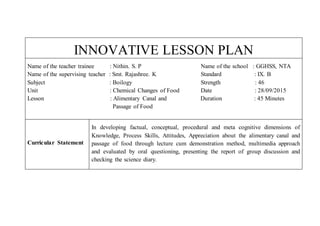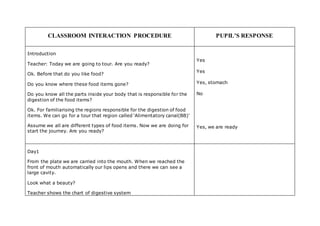The document describes an innovative lesson plan for a 9th standard biology class on the alimentary canal and passage of food. The lesson uses lecture, demonstration, multimedia, group discussion and evaluation to develop students' knowledge of the key facts, concepts, and processes involved in digestion as food passes through the oral cavity, esophagus, stomach, small intestine, large intestine and is eliminated through the anus. The lesson engages students through role-playing different food items on a tour of the alimentary canal over two class periods.






